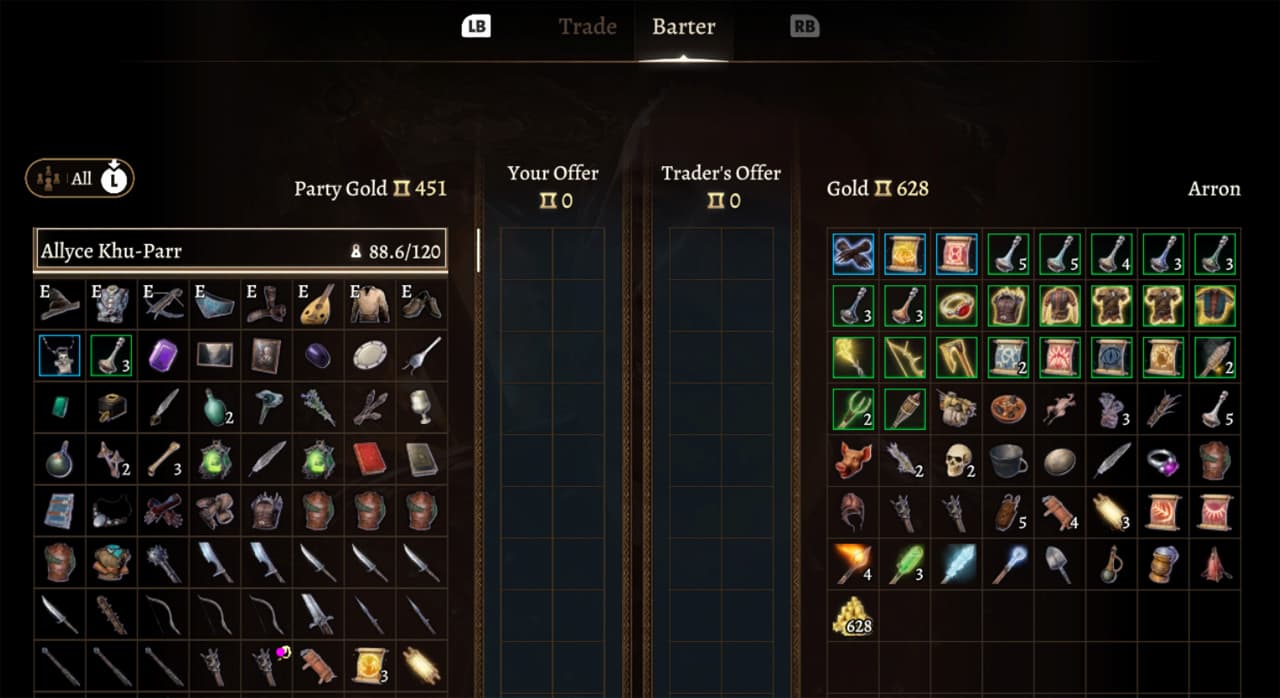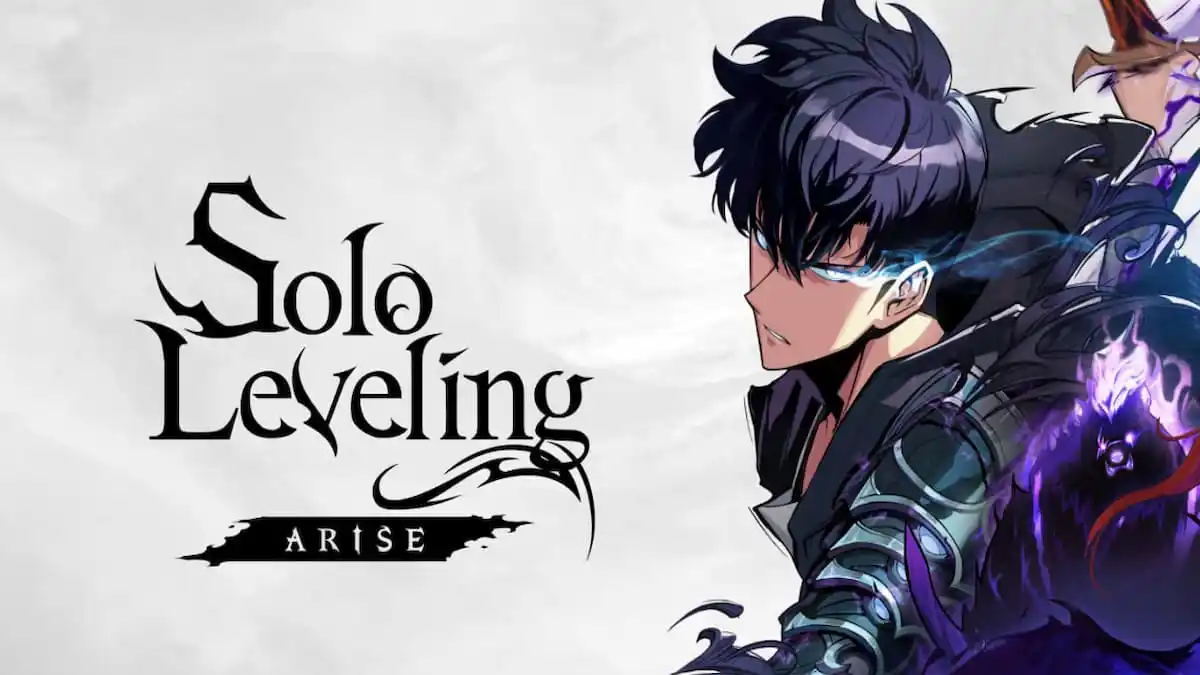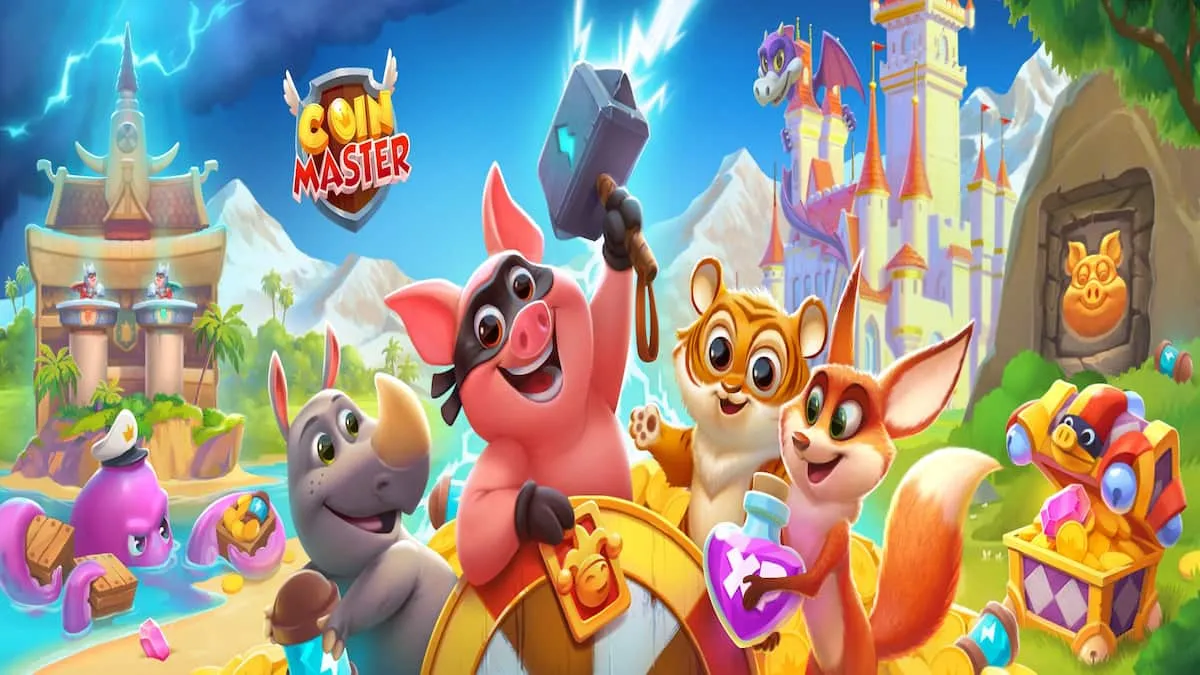You’ll pick up so many items playing Baldur’s Gate 3 that you’ll regularly need to offload them. But when you make your way to a shopkeeper, you’ll be confronted by a ‘barter’ screen instead of a ‘trade’ one. If that’s got you a little confused, here’s the difference between barter and trade in Baldur’s Gate 3 (BG3) explained.
This Is the Difference Between Barter and Trade In BG 3
When you speak to a shopkeeper and ask to see their wares, you can choose to trade or barter. However, for some inexplicable reason, you’ll always be presented by the barter window first. To switch to the trade window, you have to click on the button on the top of the screen or, on a controller, tap the top bumper buttons.
Trade lets you buy and sell items using gold. There are two windows, your item window (showing your items and, further down, other NPCs items) and the shopkeeper’s item window. Click on any of your items and you’ll sell it for gold, which is added to your party’s gold pool. Click on any of the shopkeeper’s items and you’ll buy it with money from your gold pool. Nice and easy.

Barter mode looks similar but there are two extra vertical windows, your offer and trader’s offer. This mode lets you trade items for other items, instead of using gold. You drag an item or items from the trader’s inventory to the trader’s offer. Then, you drag items from your inventory and when both your offer and the trader’s offer are of equal value, you can complete the deal.
Hang on. Equal value? So there’s no haggling? None whatsoever. If the items you’re trying to offload are worth even a gold coin less, the trader will refuse your offer.
If There’s No Haggling, What’s the Point of BG3’s Barter?
This is where it gets kind of daft. What you can do is add items to your offer, so that what you’re offering is worth more than what you’re getting in return. If you do that, the merchant’s approval will increase and it’ll lower the price of the items he trades and barters.
It’s a very strange way of doing things, though the one consolation is that you can throw a few skulls into the deal. They won’t be shifting those in a hurry, unless a coach trip of necromancers passes through. But it’s only worth it if you’re doing a lot of business with the trader, or you’re going to buy some big price items.
I’ve rarely actually used barter. It’s far more unwieldy than trade mode which lets you sell items in a matter of seconds. And that’s the difference between barter and trade in Baldur’s Gate 3 explained.
For more on BG3, check out our guides on how to respec your party members, as well as fixing any save bugs that might pop up. And if you’re just starting out, watch Destructoid’s excellent beginner’s guide to Baldur’s Gate 3.






Published: Aug 10, 2023 02:20 pm